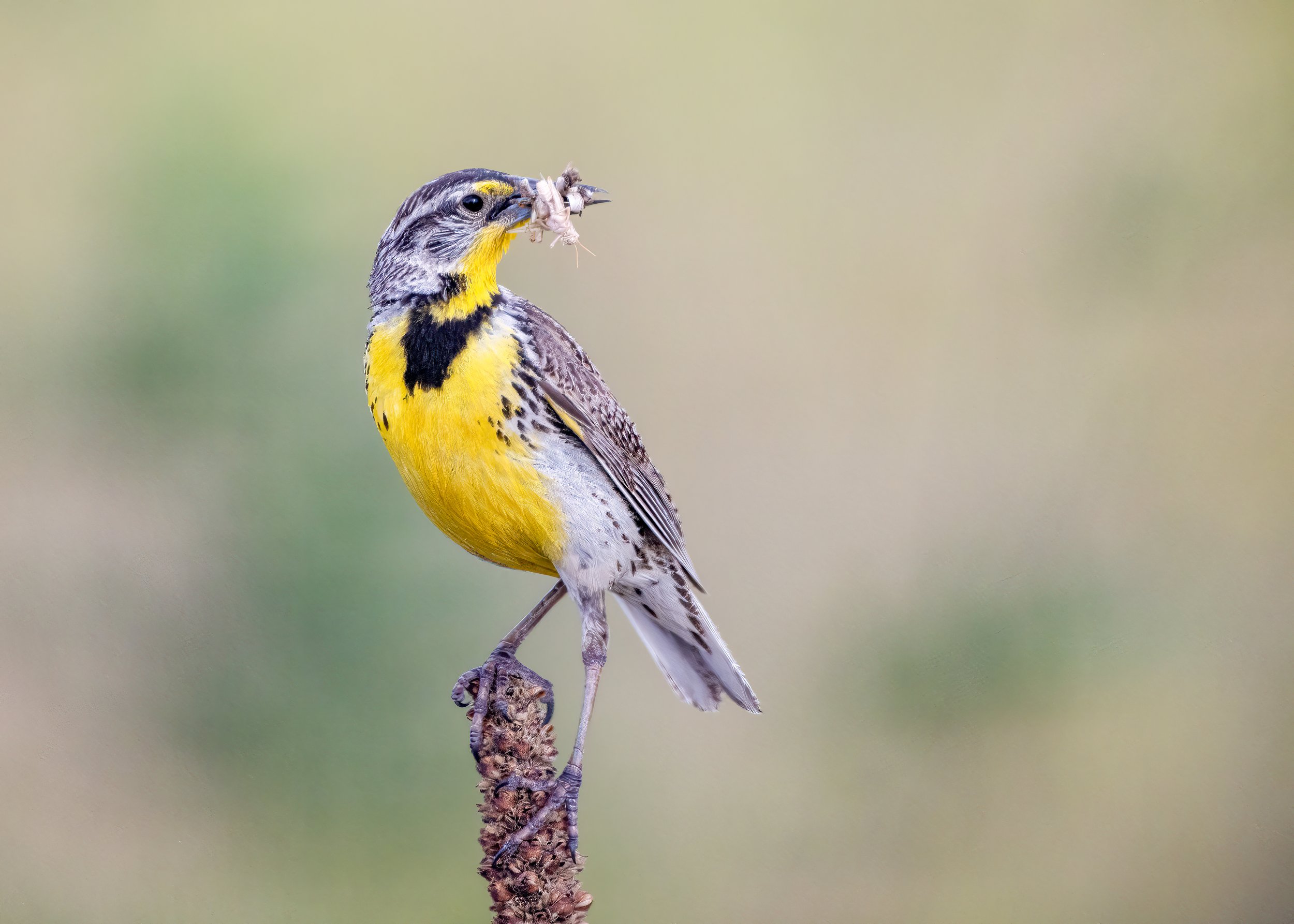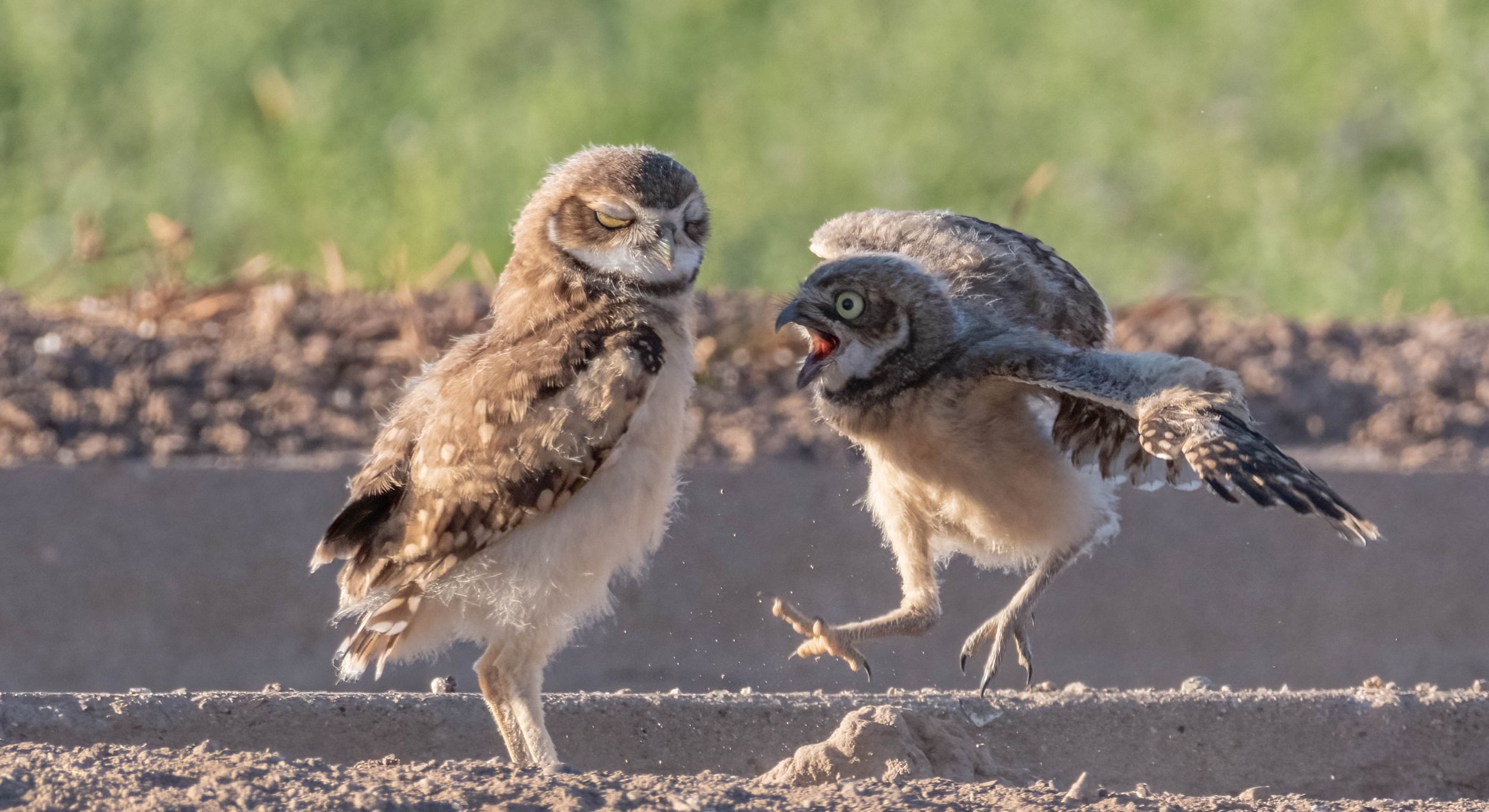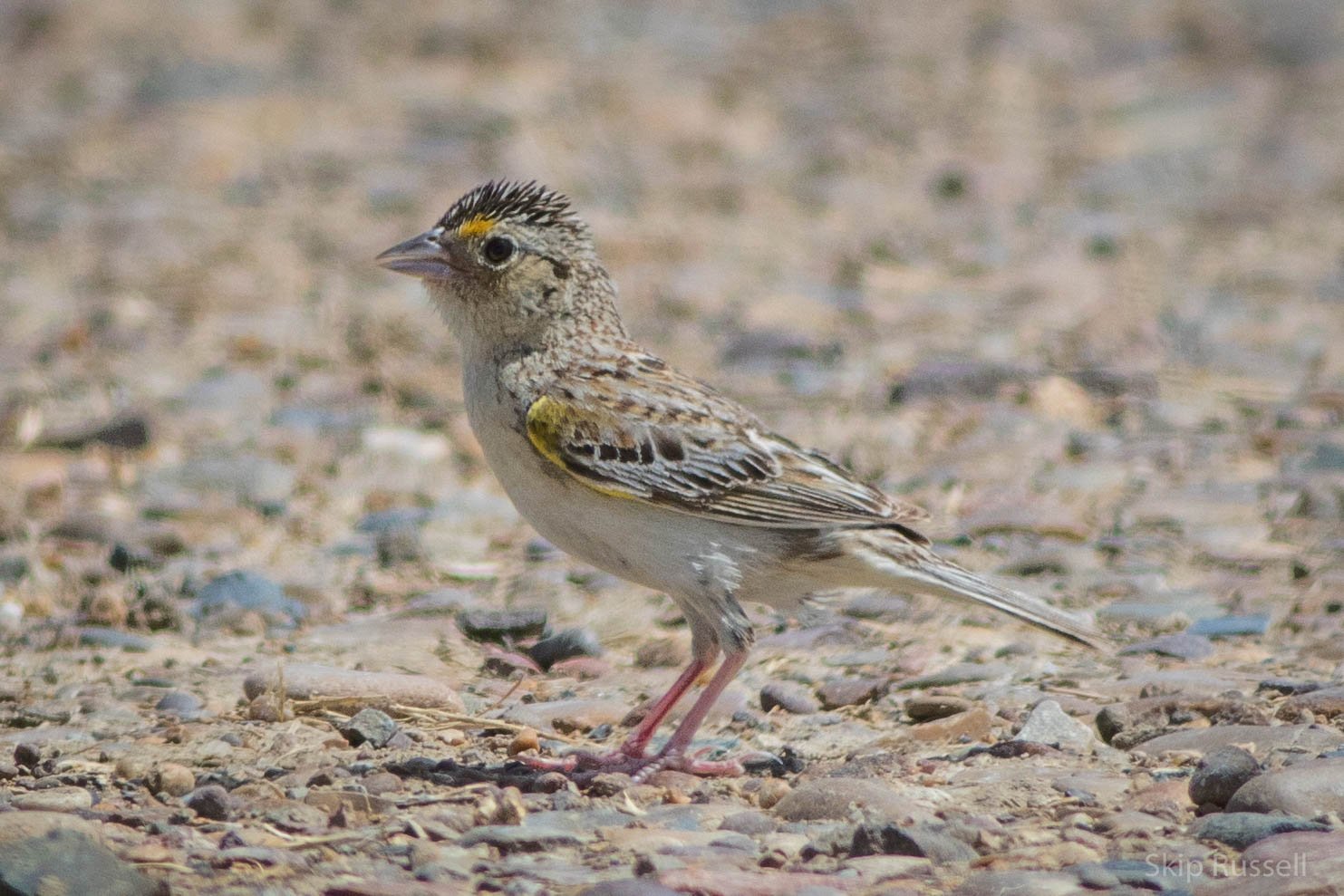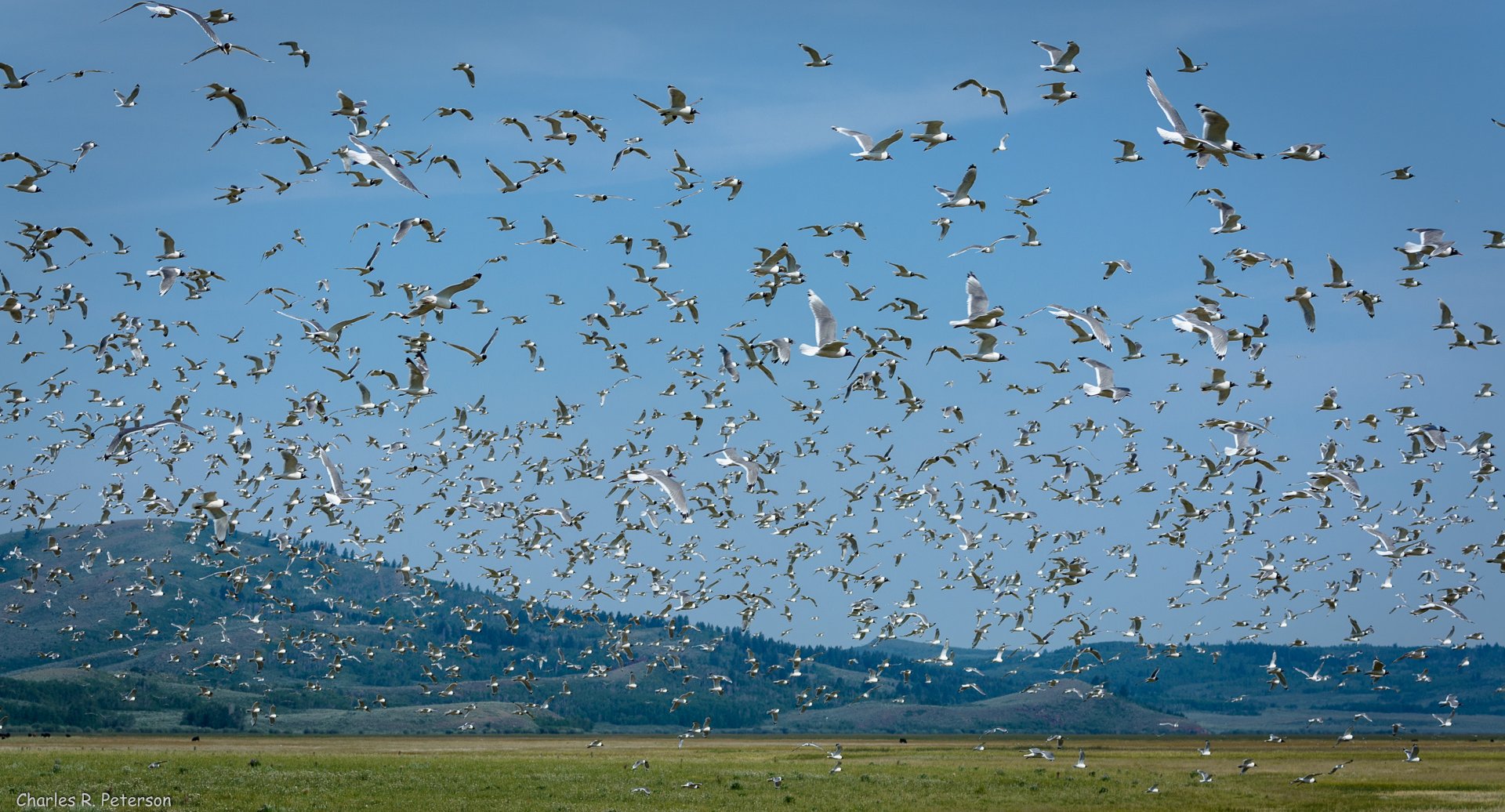Plague or Prey?
Grasshoppers and Mormon Crickets - Valuable Bird Prey or Virulent Pests?
By Sharon Selvaggio, Pesticide Program Specialist, Xerces Society
Periodically, news reports surface of a “plague” of grasshoppers or Mormon crickets hitting Idaho, Nevada, Montana, or other western States. Invariably, these reports are accompanied by photos of thousands of crickets swarming a highway, a field, or worse, the side of a house.
These reports, and especially the references to “plagues” play right into the prevailing cultural attitude – that insects are frightful creatures and should be quashed. It props up the idea that stamping out grasshoppers and crickets is not just the only thing to do, it’s the right thing to do.
But what’s the truth? Do grasshoppers and Mormon crickets, native to Western states, have an ecological role in our native habitats? What do these species mean for birds? Does it serve the greater good when the U.S. Department of Agriculture–Animal and Plant Health Inspection Service (APHIS) blankets hundreds of thousands of acres—even sometimes millions of acres—of Western rangeland with insecticides each year?
Xerces Society Takes A Close Look
Xerces has been asking these questions for several years. As we’ve investigated this practice, we’ve begun to recognize a few basic facts. Grasshoppers and Mormon crickets have always been an important part of the western rangeland ecosystem, supporting a complex web of life.
Western Meadow Lark (Michael Levine-Clark, CC BY-NC-ND 2.0) Burrowing owl (Wendy Miller, CC BY-NC-ND 2.0 DEED, Flickr)
For example, dozens of western bird species feed on grasshoppers. Some that rely on grasshoppers are iconic: Greater sage-grouse, Swainson’s hawk, American kestrel, Western meadowlark, and Burrowing owls. Even gulls, which are heralded in Temple Square (Salt Lake City) for helping to save the crops of early Mormon settlers from grasshoppers and Mormon crickets. Back in the 1940s, a pair of researchers estimated that an average bird density of 2.5 birds/acre would mean the consumption of “billions of injurious insects” each year.
Loss of Insects, Loss of Birds?
Yet birds are suffering. There are three billion fewer birds in North America now than in 1970 and grassland-associated birds are one of the worst hit groups. Could a broad-scale loss of insects—what some are calling the “insect apocalypse” be part of the problem? And if insects are declining, shouldn’t we examine the use of insecticides more closely—especially on natural lands? As a general rule, insecticides do not distinguish between the grasshopper and the bee, beetle, or caterpillar nearby.
Historically, crop treatment was the focus of APHIS’ grasshopper and cricket suppression efforts. But over the last 20-30 years, the APHIS program has been focused mainly on treatments of rangelands – a large portion of these on public land. For example in Idaho, large grasshopper and Mormon cricket treatments have occurred on Bureau of Land Management land in the Owyhee front – not far from the Morley Nelson Snake River Birds of Prey National Conservation Area.
Grasshopper Sparrow (Skip Russell, CC BY-NC-ND 2.0 DEED) Franklin's Gulls (Charles (Chuck) Peterson, CC BY-NC-ND 2.0 DEED
Funding may even be going up for the APHIS program. Nevada and Idaho Senators recently added additional funds to the Senate appropriations bill to specifically fund Mormon cricket control, and overall APHIS' budget for this program may be up by $4 million, a 36% increase. The Xerces Society believes this program must be reexamined.
For further reading:
Planned Grasshopper Sprays Threaten Monarchs, Bees, Beneficial Insects, and Birds (Sharon Selvaggio, Pesticide Program Specialist, Xerces Society)
Protecting Grassland Ecosystems from Insecticides (Scott Black, Executive Director, Xerces Society)
Home on the Range: Grasshoppers and Insecticides on Western Rangelands (Sharon Selvaggio, Pesticide Program Specialist, Xerces Society)
Sharon Selvaggio
Sharon Selvaggio Presentation December 12
Please join Golden Eagle Audubon on December 12 for a presentation from Sharon and to learn how you can help.
Grasshoppers and Mormon Crickets - Valuable Bird Prey or Virulent Pests?
December 12, 6:00 via Zoom
Free, but registration required - REGISTER




